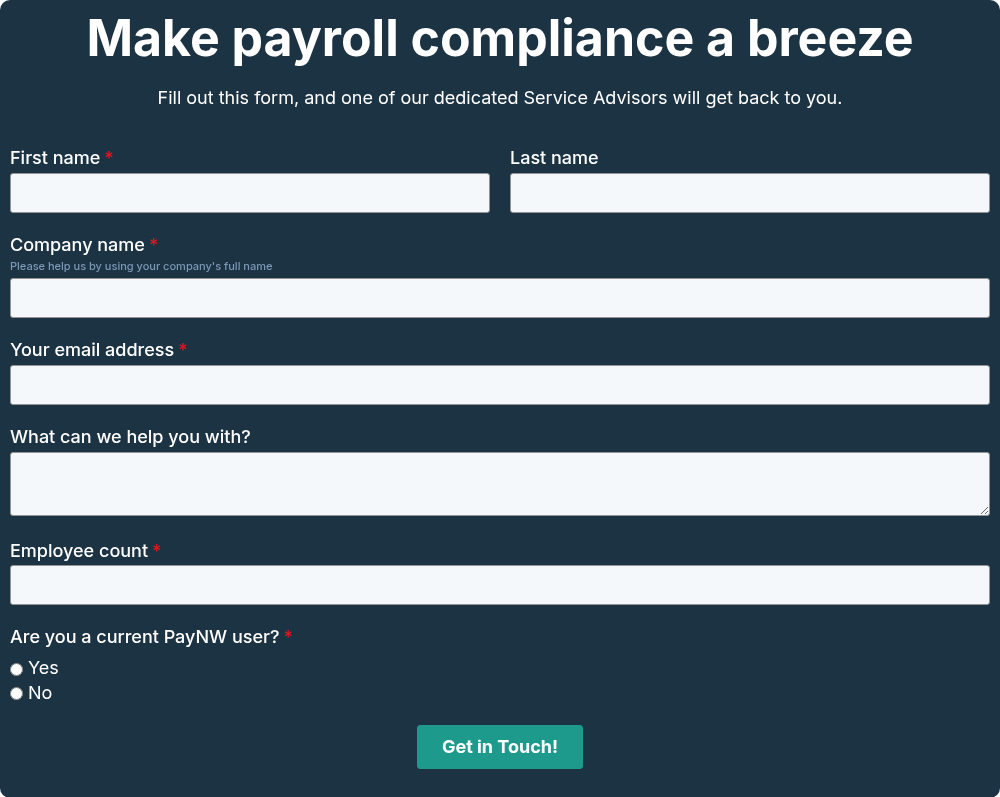4 min read
Washington State Payroll Laws: What Companies Should Know
Processing payroll in Washington State has many components. Before starting to pay employees in the state, you must consider several areas of...

Processing payroll for unionized employees isn’t just about paying people on time. It involves meeting the terms of a collective bargaining agreement (CBA), following local and federal labor laws, and maintaining precise records that can stand up to audits. For HR and payroll teams, this can be a high-stakes balancing act.
Properly managing union payroll is as challenging as it is vital. Union regulations are often complex and are subject to change at any time, and the penalties for not adhering to these rules can be costly. Manual implementation of these regulations by payroll and HR teams can be a massive administrative burden, and simple human error can lead to inadvertent violations. Finding ways to mitigate human oversight, such as the use of a Human Capital Management (HCM) system, is crucial.
Union contracts often introduce additional layers of rules and tracking requirements, including:
These requirements don’t just increase the volume of payroll data—they increase the risk of errors if the process is manual.
Manually tracking and applying union regulations across an entire organization’s payroll isn’t just time-consuming—it’s unsustainable. A modern Human Capital Management (HCM) system can significantly reduce the administrative strain of managing payroll for unionized workforces. Key features include:
An HCM system can be configured to apply the correct pay rate, overtime rule, or benefit contribution automatically, based on employee classification, shift, or seniority. This reduces the need for manual calculations and helps prevent costly errors.
When time tracking is integrated with payroll, hours flow directly into the pay process, eliminating re-entry and reducing mismatches. Features like mobile clock-in, location verification, and department or job tracking ensure accuracy even in complex work environments.
Some CBAs require employees to verify they took required breaks or confirm the accuracy of their hours. An HCM system with attestation prompts can gather these confirmations digitally, store them in an audit trail, and flag missing responses for follow-up.
Whether for union audits, certified payroll requirements, or internal reviews, an HCM system can generate detailed, accurate reports on wages, deductions, benefits, and hours worked—organized in a way that matches compliance needs.
Union agreements can be renegotiated, and labor laws change frequently. A flexible HCM platform allows payroll teams to adjust rules and calculations quickly, without rebuilding the entire process from scratch.
Imagine a manufacturer with union employees working in multiple departments:
With an HCM system, these rules can be built into the payroll engine so that calculations happen automatically, every time, for every employee, without HR staff having to apply the rules manually.
Managing payroll for unionized workforces requires a high level of accuracy, compliance awareness, and recordkeeping. Manual processes can put organizations at risk of payroll disputes, compliance penalties, and strained union relationships.
An HCM system helps by automating complex rules, integrating time tracking with payroll, enabling employee attestations, and producing reliable, audit-ready records. While the right system won’t replace the need for understanding your union agreements, it can provide the structure and safeguards to make the process far more efficient and less error-prone.


4 min read
Processing payroll in Washington State has many components. Before starting to pay employees in the state, you must consider several areas of...

3 min read
When it comes to managing your business’s HR and payroll needs, it’s essential to understand the different options available. Two popular choices are...

2 min read
The concept of “digitizing” business information and processes has been around for decades. The term even has a certain ‘90s ring to it. But with the...